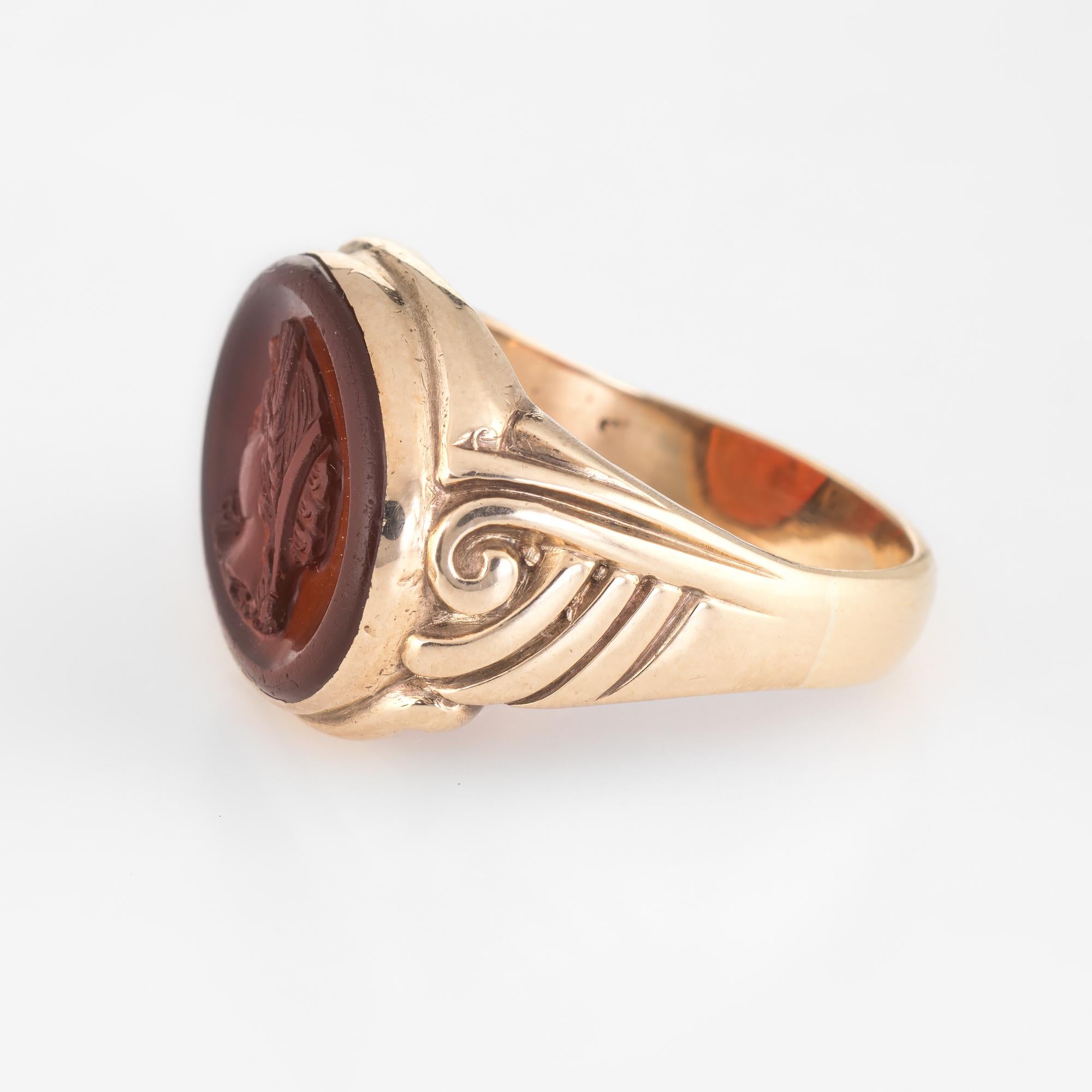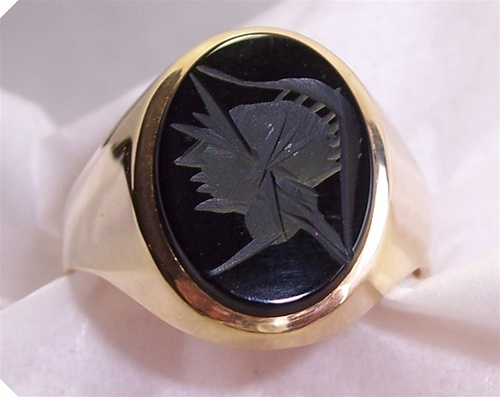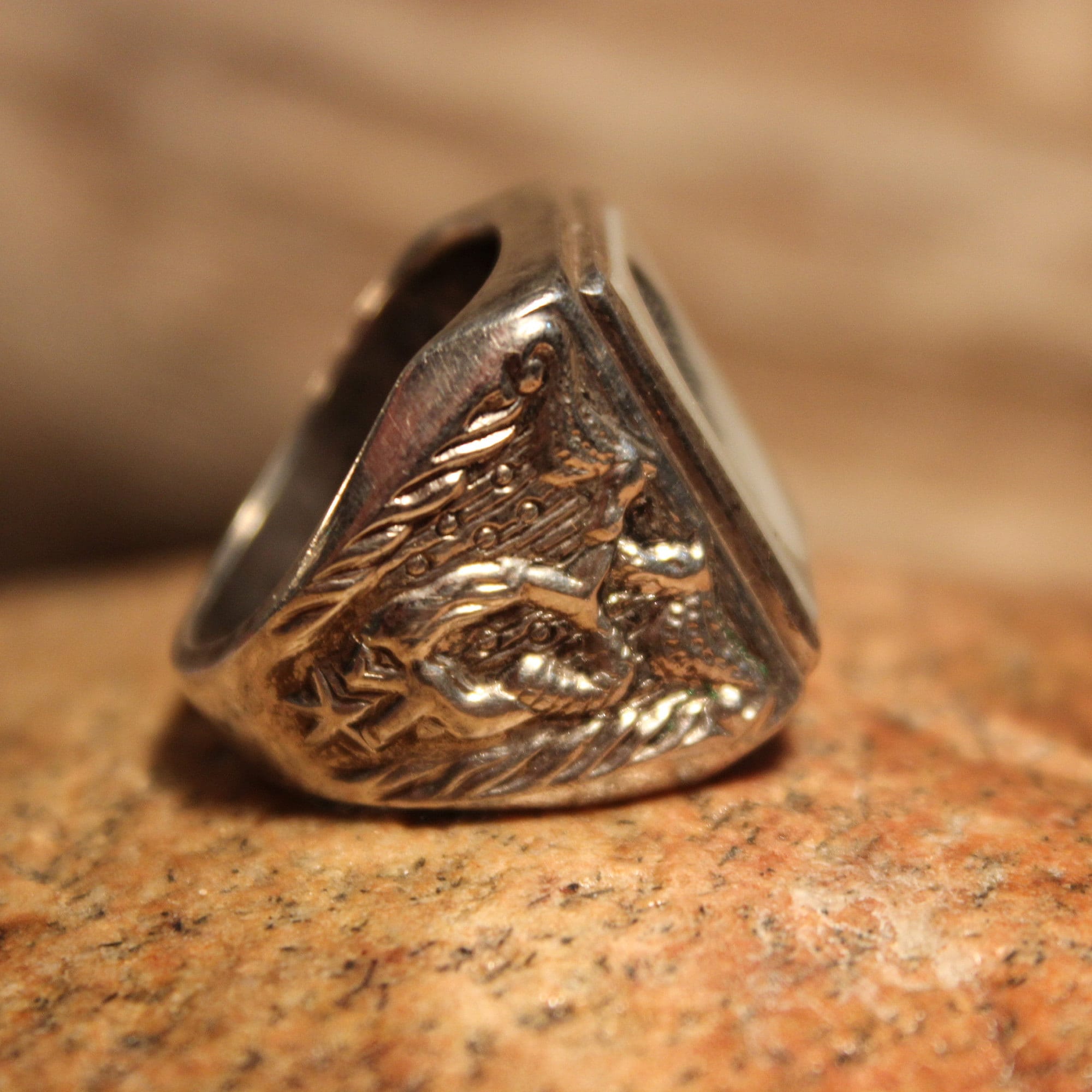

See catalogue of Marie Stuart at Ecouen for the ring.

Leblond suggests that this ring may have been made in France and that the monogram of the Dauphin and Mary in Greek was added inside the bezel to indicate that he, as her consort, could use the signet occasionally on documents in Scotland or in France. 205), for instance the seal-ring of Duke Maximillian I of Bavaria in Vienna and the 'Gresham' ring dated 1575, as well as the rings worn by Archbishop Cranmer and by Sir Matthew Parker in portraits. Other examples of signet-rings of this date that show the heraldic colours through an engraved rock crystal are known (Pl. Unlike many of Mary's jewels, whose whole history is known from the time of her death, nothing is known of this ring between 15, when it was in the possession of Queen Charlotte, wife of George III. On the reverse of the bezel, a monogram within a circle surmounted by a crown is composed of the initials of Mary herself and her first husband, the boy-king Francis II of France, to whom she was married in 1558 and who died only two years later. This signet ring of Mary Queen of Scots bears her coat of arms the metals and tinctures on the blue ground, with which the stone is backed, show through the crystal. Text from Ward, Cherry et al, 'The Ring from Antiquity to the Twentieth Century,' London 1981, pl.210: Text from Dalton 1915, Catalogue of Engraved Gems:įormerly belonging to Mary, Queen of Scots. The Seton seal is described and illustrated by A.B.Tonnochy in 'Old Furniture, vol. Subliniunt autem id genus crustis eorum colorum pigmenta quae exigunt insignia nunc in onychis Germanicae execta candidi coloris crusta a scalptoibus inciduntur insignia quibus nobiles familiae gaudent. Georgius Agricola, 'De Natura Fossilium', book vi.

Signet see refs under 650.Īrmorial signets as engraved gems. 'Henrietta Maria' seal purports to be Mary. Supplementary information to Dalton 1912 (annotations in various hands): Large seals were executed in the same style the Franks Bequest contains that of Alexander Seton, first Earl of Dunfermline. Several are in the Waterton Collection in the Victoria and Albert Museum. Rings of this type, showing armorial bearings with their proper metals and tinctures beneath crystal, were evidently common in the second half of the sixteenth century they may be seen, for example, in the portraits of Sir Nicholas Bacon and Cranmer in the National Portrait Gallery. Richard Greene, F.S.A.,(Handwritten note: 'for fourteen guineas ) from whom it was acquired in 1856 by the British Museum. It subsequently passed into the possession of the Duke of York on the sale of his plate and jewels at Christie's in March, 1827, it was purchased by Mr. 10K Carved Tigers Eye Soldier Intaglio Retro Ring Size 10. 10K Gold Tigers Eye Art Deco Intaglio Ring. Its history is unknown during the period between Mary's death and the year 1792 when an impression is reproduced by Astle as "from a seal of Mary Queen of Scots in the royal collection of the Queen's House" it thus belonged at that time to Queen Charlotte. 10K 1960s Carved Hematite Intaglio Mens Ring Size 9.25 Yellow Gold CCXF M. Since after her marriage in 1558 Mary no longer bore the arms of Scotland alone, while after the death of Francis she would no longer have used the cipher with his name, it may be assumed that the ring was made, probably in France, at some time in the decade between 15. S.Walford, 'Archaeological Journal', xv, p. This is a Natural Hematite, which compliments beautifully the highly polished Sterling Silver. The ring is completely Solid Sterling Silver with a smooth polished finish. The employment of Greek letters in this cipher, and in a variant used by Mary in a letter to Elizabeth, June 15,1565, is in accordance with precedent, Francis I having employed Φ, Louis XII and Louis XIII Λ (Menestrier, 'Véritable Art du Blason', p.22, Paris, 1673, and W. This stunning signet ring has been set with one Cushion shaped 12x10mm (0.48'x 0.40') Natural Hematite Intaglio Stone. If not a motto such as 'Nemo me impune lacessit', or 'Optimam partem elegit', this may have been the anagram, 'Sa vertu m'attire', which is found round the same cipher engraved on Mary's silver hand-bell in the possession of the family of Bruce of Kennet ('Catalogue of Antiquities', as above, pp. It has been conjectured that some legend may have been painted upon the white enamel of the band. In the design at the back of the bezel, white enamel is visible in the band enclosing the cipher, translucent red on upper stroke of the M, and white in the upper stroke of the Φ the crown may have been enamelled in black. The hoop is much worn, so that the floral scrolls are partly effaced traces of green enamel remain in one flower. 316::Ī.Way in Catalogue of Antiquities, Works of Art, and Historical Scottish Relics exhibited in the Museum of the Archaeological Institute of Great Britain and Ireland during their annual meeting held in Edinburgh, July, 1856 (Edinburgh, 1859), pp. A z jewelry mark.Curator's comments Text from Dalton 1912, Catalogue of Finger Rings, no.


 0 kommentar(er)
0 kommentar(er)
